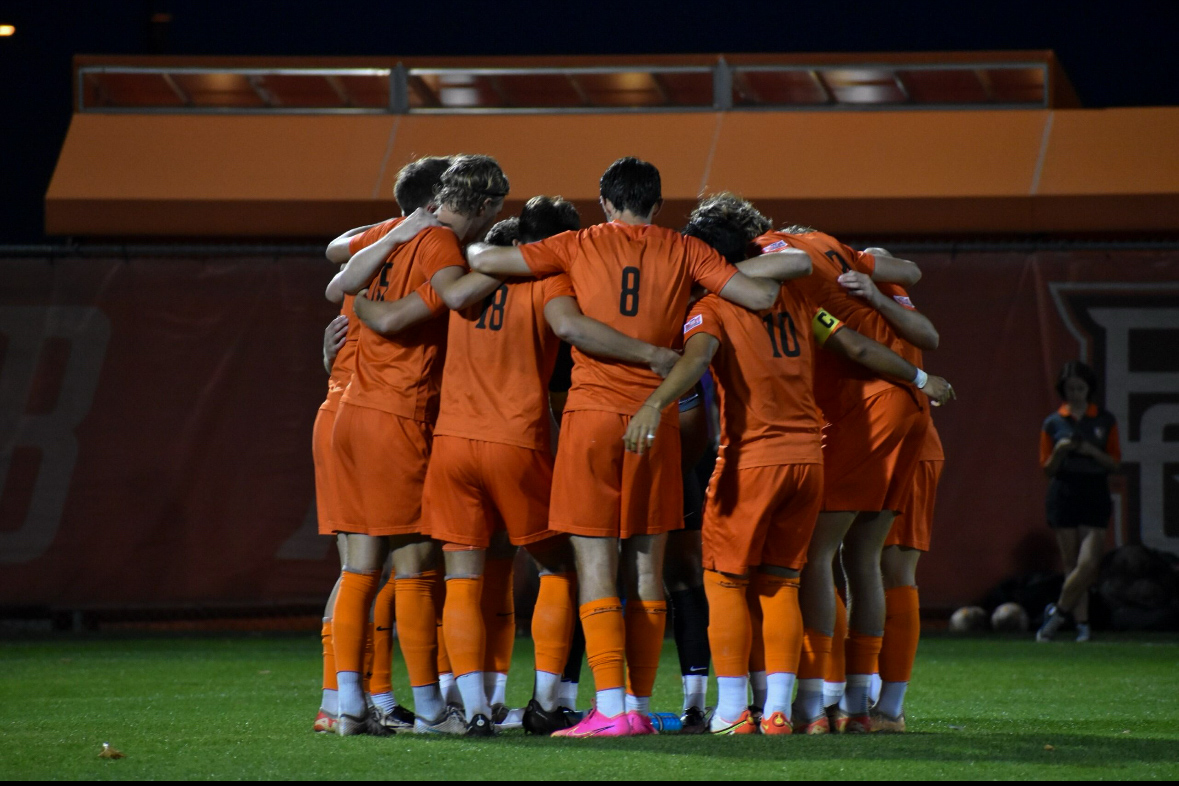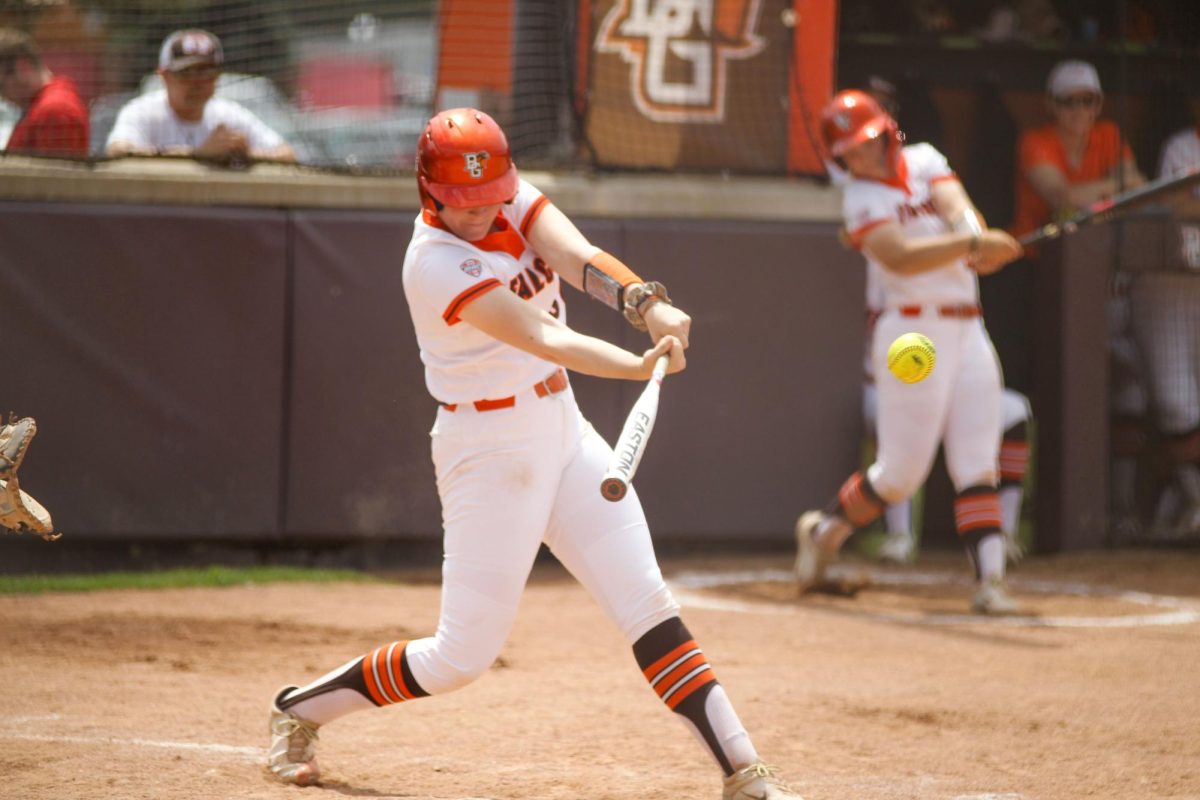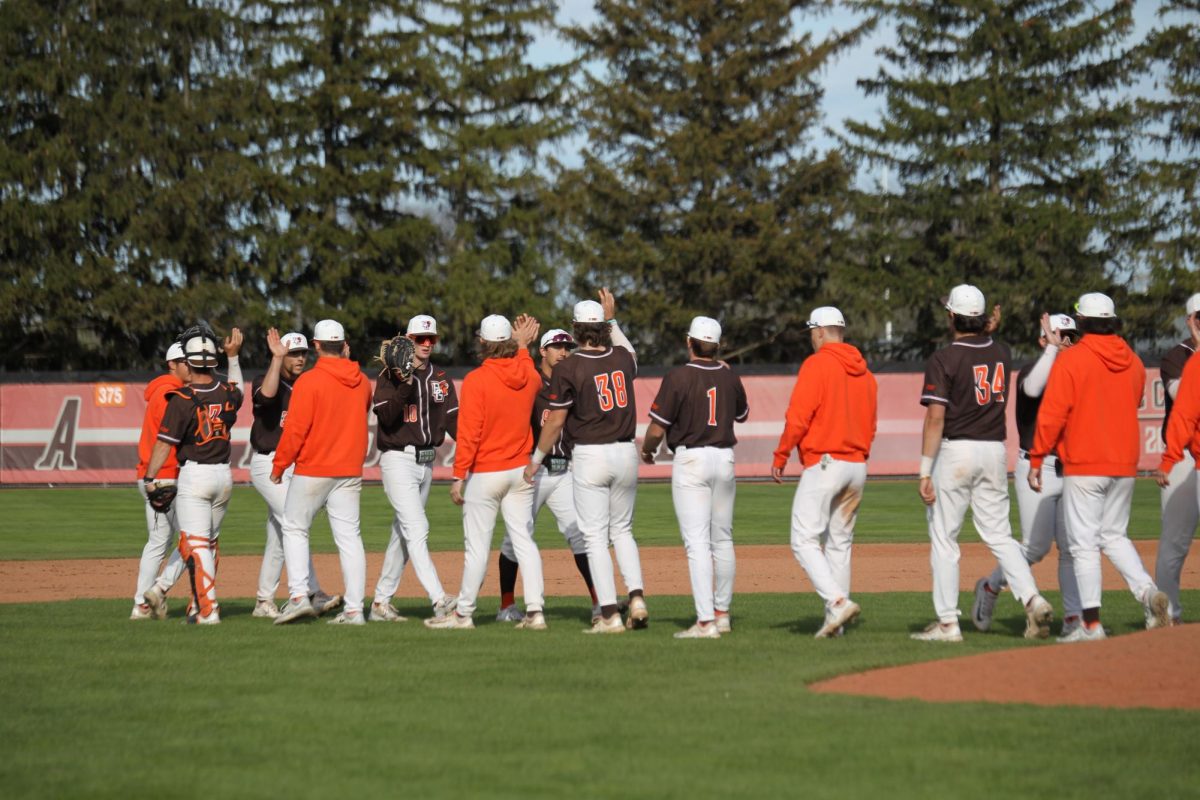Students walking past Shatzel Hall and Prout Chapel may be unaware of a glimpse into Wood County’s past located directly within the University.
Near the Union parking lot stands a sign made entirely of recycled plastic, marking the Native Prairie Garden, a joint project of the Center for Environmental Programs and the Grounds Department. The concealed grove of plants serves as a unique preservation of local history and a symbol of the University’s commitment to a sustainable and ‘green’ future.
Clint Cooper, freshman, said he passes the garden almost every day but never realized its importance.
‘I walk back and forth to and from work every day and I haven’t ever noticed it before, honestly,’ he said. ‘But now that you said something, I see that it’s pretty neat.’
The garden is an important subdivision of a prairie restoration project involving faculty and students that aims to restore 10 acres of prairie land next to the University’s driving range, said Holly Myers, lecturer for the department of environment and sustainability.
The garden was planted about five years ago when the department moved to Shatzel Hall.
‘When we moved here, that area basically didn’t have anything growing in it except for scrubby-looking weeds,’ she said. ‘I was the director of the department at that time, and I approached grounds [department] to see if they had any plans for it. I asked if we could plant some native plants there and they agreed.’
The garden began as a volunteer project and now contains 23 flowering prairie plants that once flourished in Wood County before European settlement. These plants include Butterfly weed, Black-eyed Susan, Wild Strawberries and Western Sunflowers, among others. The plants require less water and, once established, essentially care for themselves, Myers said.
As the sign denoting the garden explains, however, these once abundant native species are now threatened by invading plants, crop planting and commercial and residential development. Due to these factors, it is very difficult to find these hardy plants growing in their native habitat anymore, said Matt Minnick, a grounds department supervisor.
A significant part of the University’s goal of environmental sustainability is preserving these historic plants for future generations. Although the University is not aiming to plant prairie plants exclusively, Minnick said the grounds department is now trying to incorporate the Native Prairie Garden’s species into regular gardening.
‘We’re an educational facility, and as a University, we’re looking to be a leader in environmental sustainability. Native plant species are a good way to accomplish both of those,’ Minnick said.
Myers said grounds is also incorporating these plants because they require little upkeep and naturally thrive in this location.
‘These plants are amazing. If you plant native species, you gain beautiful color all year round,’ she said, adding the Native Prairie Garden’s warm-weather grasses will peak in a week or two for visitors to observe.
Myers said the fact that many students pass the garden and are unaware of its history and symbolic nature doesn’t bother her. Those who do notice the garden are appreciative and those who don’t probably aren’t looking around themselves and observing, she said. Myers also said the purpose of the garden was not necessarily to put it on the map, but rather to provide a habitat for a large variety of insects, moths, butterflies and birds and to restore a wasted space to what it once was naturally.
‘People often criticize this area for not being very pretty. It’s very flat, and with all the agriculture, it’s somewhat monotonous,’ she said. ‘We like to give people a glimpse of what this area used to look like. It’s nice to let people gain an appreciation for prairie land.”


















